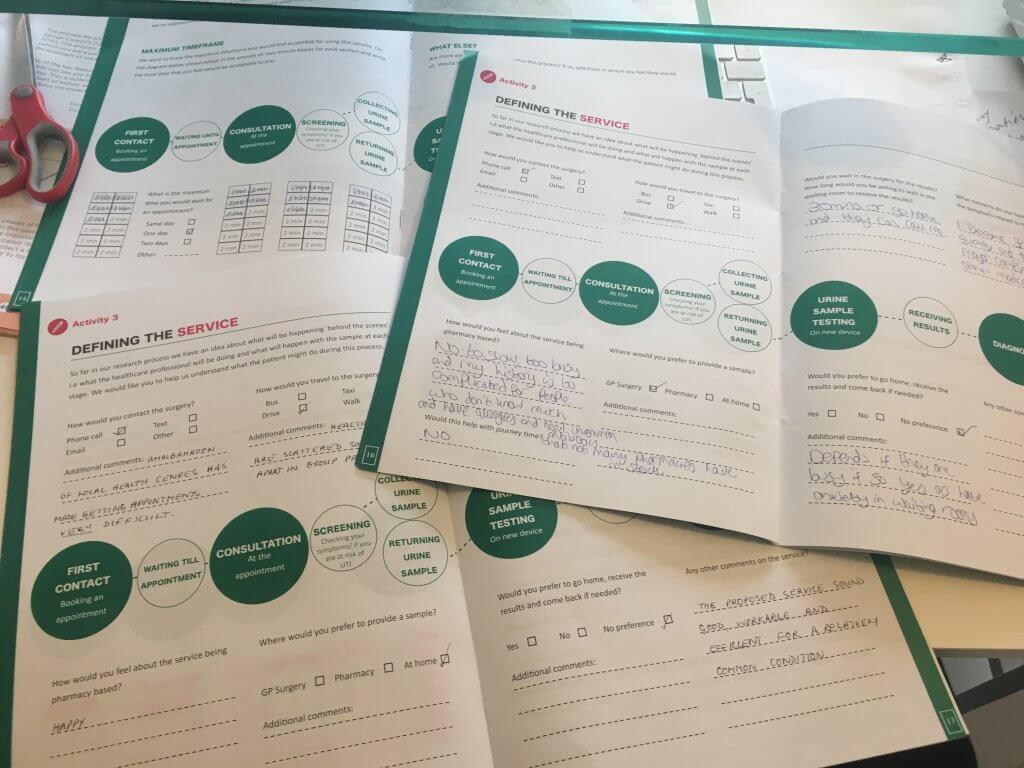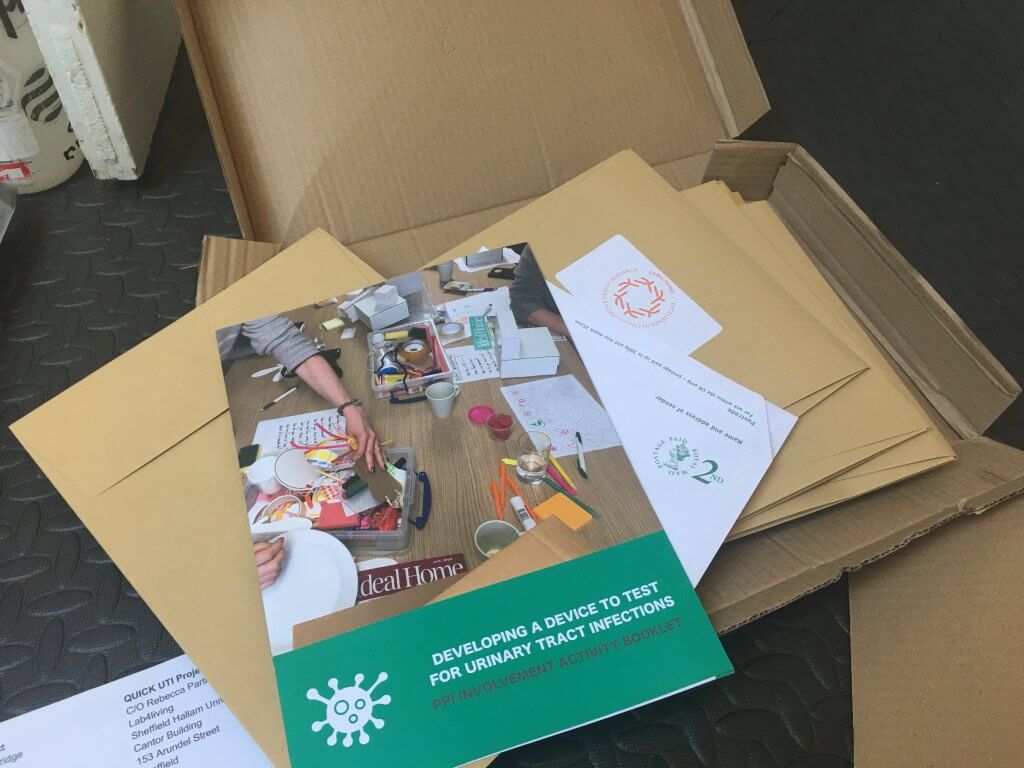Project update: 5 Jan 2021
Due to COVID-19 restrictions, face-to-face workshops to understand user thoughts on the proposed devices and pathways for the have not been possible for the UTI testing project. Lab4Living researchers have been exploring non-digital means of engaging participants meaningfully through remote co-design (see Co-design during COVID-19). Therefore, the UTI testing project team has developed a booklet of activities. We printed and sent out to all patient representatives in November 2020.
The project looks at devices for rapid testing of urinary tract infections in primary care settings (e.g. GP surgeries). The booklet activities are centred around scoping out possible pathways e.g. understanding peoples preferences around timings and methods of receiving information and understanding device requirements.

Booklet format
This format has enabled participants (who are taking part as they have had experience of UTI) to be actively involved in the design process from the comfort of their own homes. By using a booklet format, participants had the time and space to work through the different activities without feeling pressured or put on the spot. Participants filled out and posted the booklet back to the team, and we have been collating their insights.
Key insights

Key insights for the device included a preference for a smaller size, and issues around privacy of information in terms of screen display. In terms of the pathway, participants emphasised the information they would want to know in the result of a negative test. For example, what else could symptoms mean? What might worrying symptoms be? What are the next steps? The devices and pathways will be further developed based on these insights. The feedback has been valuable, and has helped the team to develop further the device and possible pathway.
Next steps
The team is now working towards developing some prototypes and exploring possible pathways that embody the user needs, to be ready for summer 2021 for further feedback.
For more information, visit the UTI testing device in primary care page.
 to top
to top
